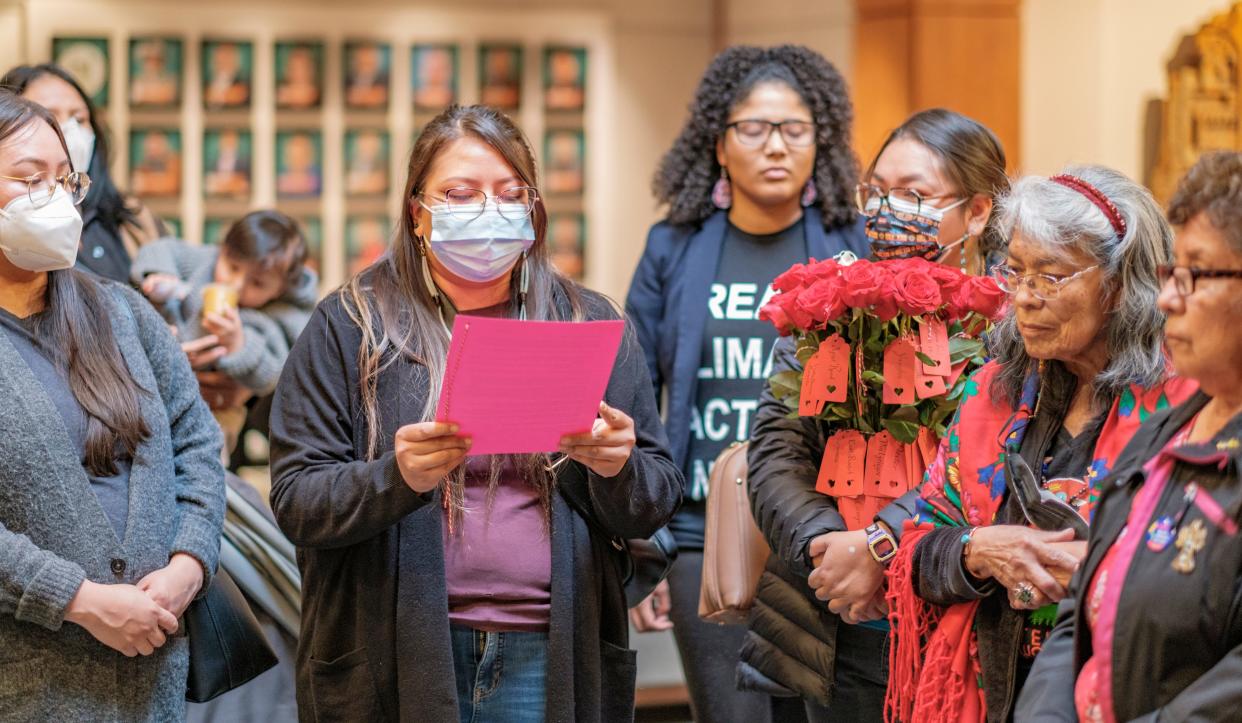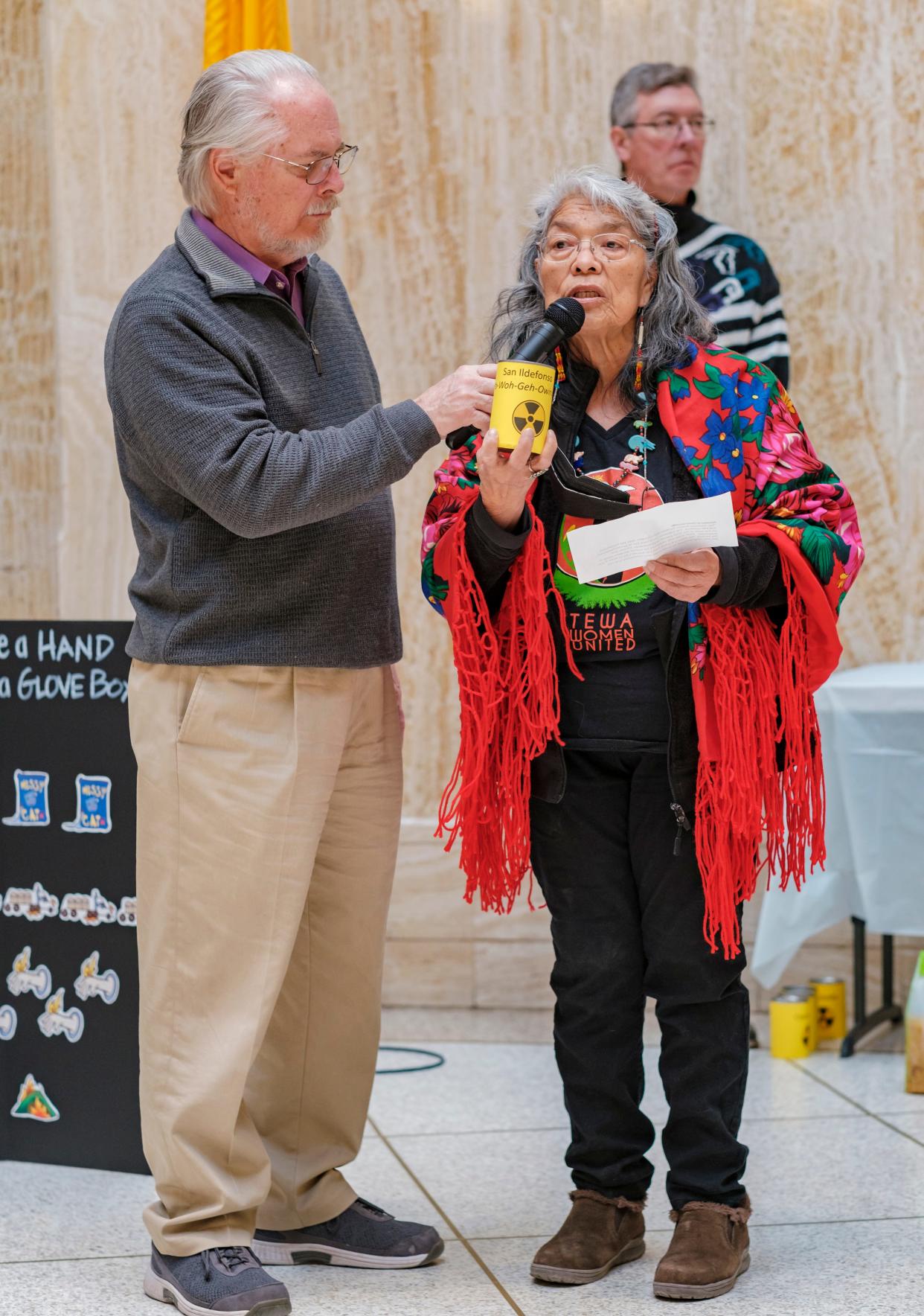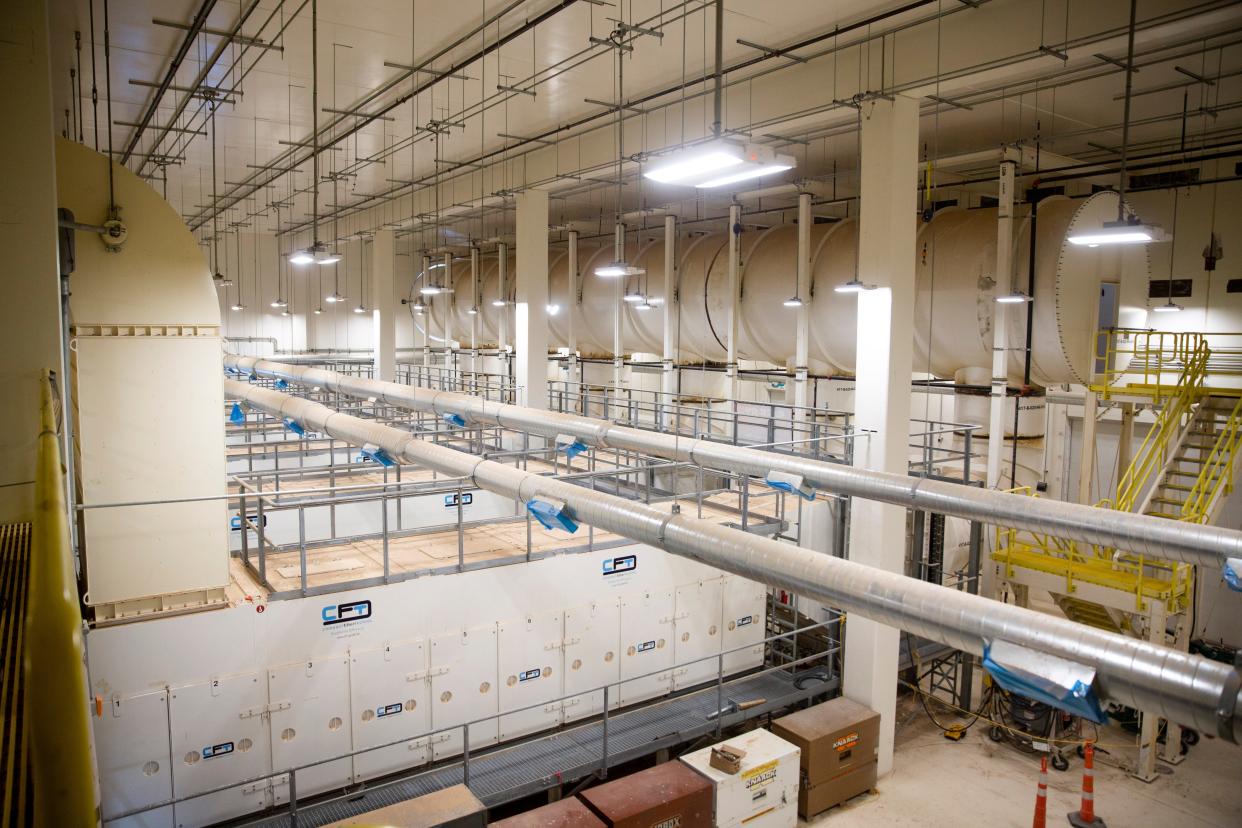It's been a decade since the radiological release at WIPP. Here's what has happened since then.
A drum of nuclear waste ruptured 10 years ago in the underground of the Waste Isolation Pilot Plant repository near Carlsbad, triggering a series of events that saw the facility close for three years while officials worked to assess the incident and prevent future incidents.
The incident resulted in a release of radioactive materials in the underground on Feb. 14, 2014, and WIPP ceased receiving and disposing of shipments of nuclear waste until 2017.
The drum came from Los Alamos National Laboratory and was packaged with the wrong material which caused materials to heat up and rupture the drum.
More: 489 shipments of nuclear waste made its way to WIPP in 2023, breaking previous records
This led to widespread air contamination in the underground, where drums to nuclear waste from facilities across the country are buried in a salt deposit about 2,000 feet beneath the surface.
Ten years later this month, WIPP had sealed off the disposal panel where the contamination occurred and waste was being emplaced, moving on to the final panel included in WIPP’s original plans.
This meant less personal protective equipment was needed by waste handlers and waste could be disposed of quicker. The facility began working on mining two additional panels to make up the space lost in the 2014 incident.
More: The WIPP facility near Carlsbad will mine new space to dispose of nuclear waste
Mark Bollinger, director of the U.S. Department of Energy’s Carlsbad Field Office said in 2023 WIPP saw the highest shipping rate since 2014, arguing that meant WIPP had “fully recovered.”
“The events taught WIPP many lessons,” he said. “Those lessons are being applied daily to take a focused and deliberate approach and to continue our mission at the ‘speed of safety.’”
Don Hancock, a frequent WIPP critic and nuclear waste program director at the Albuquerque-based Southwest Research and Information Center questioned how officials can claim recovery from 2014 when current shipping rates remain below those from before the incident.
More: Federal budget talks could endanger Holtec nuclear waste site near Carlsbad
In 2023, WIPP received 489 shipments. That’s the most since the 2014 incident but only about 42 percent of the most annual shipments at 1,142 in 2006, according to DOE records.
Hancock posited that WIPP’s shipping rates have yet to reach the levels the site was achieving before the 2014 incident.
“The facility by its own metrics in how much waste, it still hasn’t recovered. It’s not able to do what it could do before, and it’s costing more to do a lot less,” Hancock said. “In terms of cost-benefit to the taxpayers, it has not done a good job and it’s still not.”
More: Why did so much of WIPP's 479 nuclear waste shipments in 2023 come from Idaho?
DOE shipment records do not go earlier than 2014, but Hancock said the last decade has also seen degradation of infrastructure and equipment, making the site less safe for workers.
“For a lot of this time, workers have been in the underground with respirators due to the condition of the facility,” he said. “That’s all showing that it isn’t performing as it was before 2014.”
Residents voice growing concerns for nuclear safety in 10 years since WIPP incident
Cindy Weehler was also unconvinced. A resident of Eldorado near Santa Fe She founded advocacy group 285 Alliance to address fears of New Mexico’s nuclear industry including WIPP’s operations.
More: 'Partial work' resumes after cable snap shut down utility shaft project at WIPP
The group was critical of a plan by the DOE to ship diluted surplus plutonium for disposal at WIPP, put not only southeast New Mexico communities but also those around the country at risk along the transportation routes.

She said a repeat of 2014 along those routes could be catastrophic. The group held a demonstration on Feb. 14, 2024 in Santa Fe to commemorate the 10th anniversary of the incident in the final days of this year’s legislative session.
Weehler pointed to an end date of 2024 described in WIPP’s previous permit with the State of New Mexico, language that was removed in the latest iteration of the permit enacted last year.
More: Nuke weapons waste disposal using Waste Isolation Pilot Plant to have 'negligible impact'
“I bought my home on the route, knowing WIPP would stop taking new waste in 2024. By changing the deal, and secretly, DOE denies me the right to choose my family’s risk level,” Weehler said. “DOE has decided it will choose how much risk my family faces.”
Since 2014, officials at WIPP enacted new criteria for accepting waste at WIPP, intended to improve safety measures, said Mark Bollinger, manager of the DOE’s Carlsbad Field Office.
The waste is sent from DOE sites around the country, made up of clothing, equipment and other debris and materials and known as transuranic (TRU) nuclear waste. Bollinger said expanded requirements were put in place to ensure the TRU waste was in a safe state before getting to WIPP.

More: Cold War nuclear waste is prioritized at Carlsbad-area repository. How much is there?
That’s accomplished via WIPP’s Acceptable Knowledge (AK) policy, he said, which adds requirements like radiological characterization, visual confirmation and a flammable gas analysis ahead of transportation.
Bollinger also pointed to an about $460 million rebuild of WIPP’s ventilation system known as the Safety Significant Confinement Ventilation System designed to increase air for underground workers to breathe.

The project faced numerous delays and budget increases since its inception in 2018, and now was expected to be completed by 2025.
More: Cable snaps inside utility shaft at WIPP, pausing work for now
“Numerous safety improvements have occurred since the 2014 radiological event including changes to the waste characterization/certification process, upgrades to the WIPP safety program and the addition of improved infrastructure like the Safety Significant Confinement Ventilation System,” Bollinger said.
Resident of Spirit Wind Ranch near Las Cruces Dave Hollenbach said the added panels and plan for plutonium disposal expanded WIPP both in its mission and its size, move he said could make the project even more risky than when the 2014 incident occurred.
“The original WIPP mission was risky enough. The explosion ten years ago shows that,” Hollenbach said. “But it seemed manageable because it had limits. If DOE expands the mission, it will be riskier because it won’t have those limits.”
More: Here's what New Mexico will get out of the $883 billion federal defense bill
Nuclear waste managers tout ‘culture of safety’ at WIPP
Bollinger purported a lack of significant safety incidents at WIPP since 2014 due to “lessons learned” from 2014 resulting in stricter requirements and stronger oversight as waste is received, processed and disposed of in the underground.
“The safety of the workforce, the public and environment have always been WIPP’s number one priority. Prevention will come from maintaining a culture that values safety above all else,” he said.
But WIPP hasn’t nearly been without incident since 2014, and saw multiple problems with shipments received and attempted to be disposed of at the site along with subsequent suspensions of waste from some of the facility’s biggest shippers.
More: Carlsbad seeks millions from feds for flood project for 'underserved community'
In fall 2022, a series of problems with shipments of waste from Idaho National Laboratory led to a week cease of all shipments from that site, which accounts for more than half of the waste disposed of at WIPP.
The first incident was reported on April 9, 2022 per a letter from the New Mexico Environment Department which regulates the DOE’s permit to operate WIPP, and involved a liquid substance found on a waste drum that initially tested positive for radioactivity.
Another shipment on Aug. 2 showed heightened levels of radioactivity from the air inside a waste container, and a third on Aug. 23 had a “greasy” substance, WIPP officials said, observed on a container that was believed to be hydraulic fluid from equipment at the lab used to load the shipment.
These kinds of problems, attributed to “human error” by WIPP officials at the time should be allayed due to the stronger requirements, Bollinger said.
“Additionally, to demonstrate compliance with the transportation and disposal requirements, information about the physical, chemical and radiological properties and packaging of the waste must be known and verified prior to release from a DOE waste generator site,” he said.
But with less waste coming to WIPP today than before the 2014 incident, Hancock maintained that the facility had not been successful in its mission.
“Because of the poor performance of the last 10 years, they have the choice of admitting that it’s functioned poorly, though they want to put on rose-colored glasses,” Hancock said. “In terms of the historic purpose and design of the facility, it has failed.
He said pushing WIPP’s operations beyond previous estimates could stress its facilities beyond what they were designed for. DOE officials estimated the repository could remain operational as late as 2080.
“To fulfill the new missions, the expanded amount of waste and the operating time, the facility will need to be totally replaced,” Hancock said. “It has a continually expanding mission and a forever lifetime. That’s not more safe.”
Adrian Hedden can be reached at 575-628-5516, achedden@currentargus.com or @AdrianHedden on the social media platform X.
This article originally appeared on Carlsbad Current-Argus: WIPP works to recover from 2014 nuclear incident. Critics have doubts.
